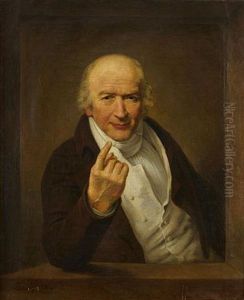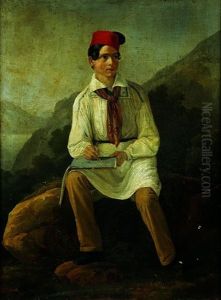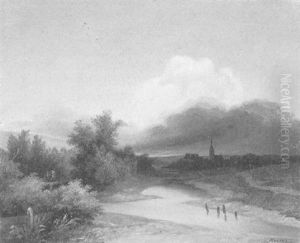Friedrich Wilhelm Moritz Paintings
Friedrich Wilhelm Moritz was a German artist known for his contributions to the field of painting, particularly during the early to mid-20th century. Born on October 5, 1888, in Posen, which was then a part of the German Empire and is now Poznań, Poland, Moritz's early life was situated in a period of significant political and social changes in Europe.
Moritz's artistic journey began in earnest in the early 1900s when he pursued his education in the arts. He studied at the Academy of Fine Arts in Berlin, where he honed his skills and developed a personal style that would evolve over the years. His work was influenced by various movements of the time, including Expressionism and later, aspects of New Objectivity. However, his style remained distinct and personal, characterized by a strong use of color and a focus on landscapes, still lifes, and portraits.
Throughout his career, Moritz exhibited his work in various German cities and gained a modest following. His artworks captured the spirit and mood of the era, often reflecting the complexities of life in Germany throughout the two World Wars and the interwar period. Despite the challenging circumstances, Moritz continued to create art that resonated with both the beauty and the anxieties of his time.
The rise of the Nazi regime in the 1930s and the subsequent political repression had a profound impact on the art community in Germany. Like many of his contemporaries, Moritz's career was affected by the cultural policies of the Nazis, who sought to control the arts and suppress what they considered 'degenerate' art. During this time, Moritz, along with many other artists, faced significant obstacles in practicing and exhibiting their work.
After World War II, Germany was left divided, and Moritz found himself in the Soviet-occupied zone, which would later become East Germany. He continued to work within the limitations imposed by the new political climate, which had shifted towards socialism and state-prescribed artistic styles. Despite these challenges, Moritz remained committed to his artistic vision, adapting to the circumstances while maintaining the integrity of his work.
Friedrich Wilhelm Moritz passed away on November 29, 1968, in East Berlin, East Germany. While he may not have achieved the same level of fame as some of his contemporaries, Moritz's contributions to German art are noteworthy. His body of work provides a window into the turbulent history of the 20th century through the eyes of an artist who lived and worked through some of the most significant events of the era. Today, his works can be found in various collections, serving as a testament to his skill and dedication to his craft.











